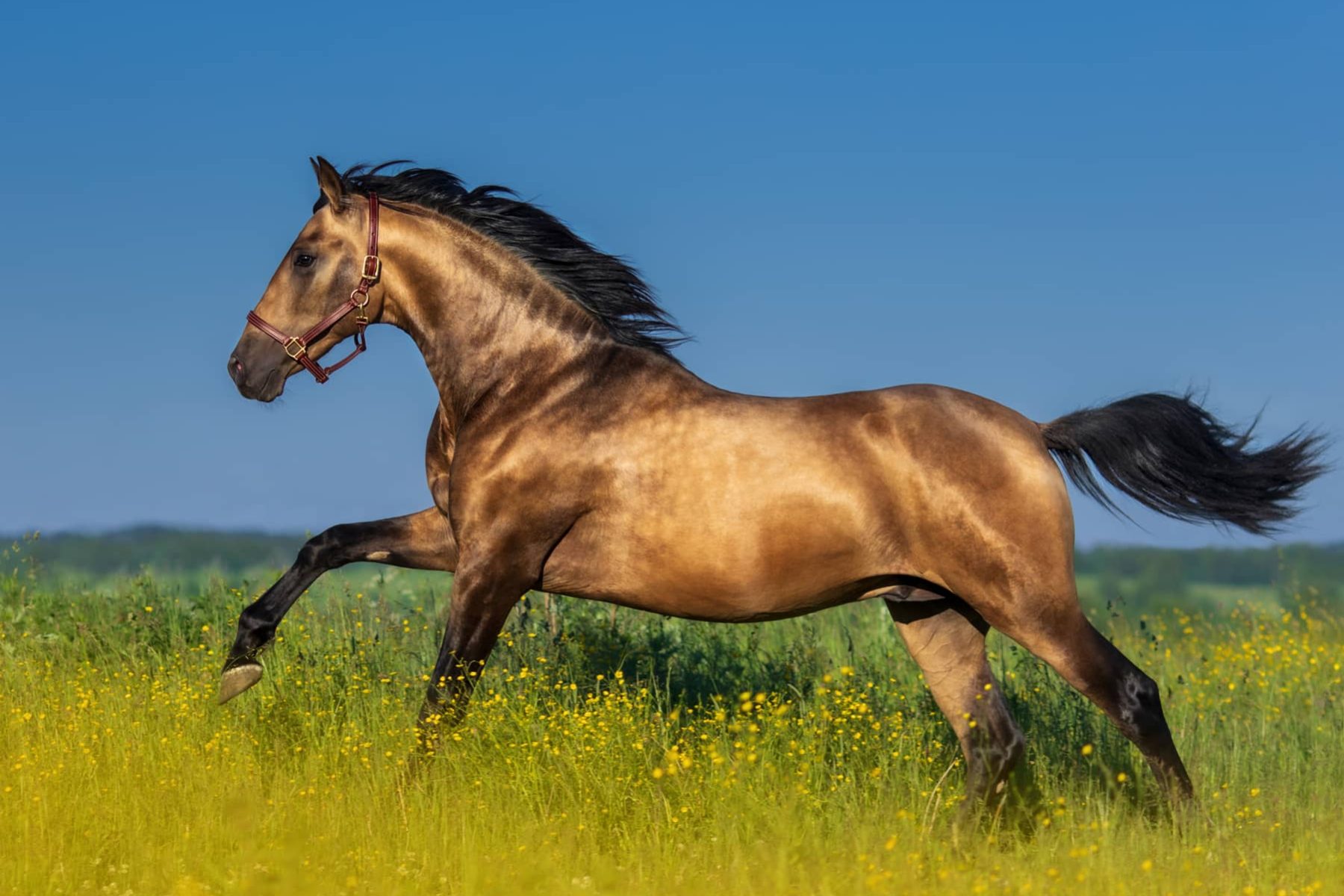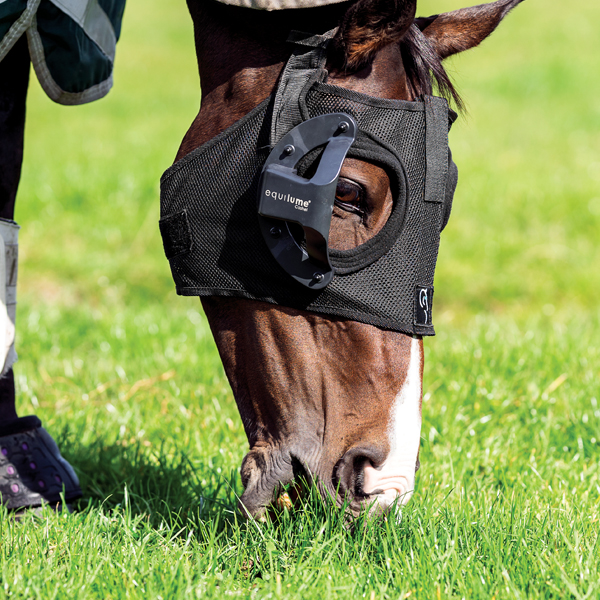
UCD researchers recruiting horses for Equine Headshaking Syndrome research.

Researchers at University College Dublin (UCD) announced a collaboration with veterinary researchers in the United Kingdom for a new study on a potential treatment for headshaking syndrome in horses. The team aims to recruit owners of headshaking horses or ponies across Ireland and the UK, for a 12-month study involving blue light therapy. Interested participants can complete an online survey to determine suitability of their horse for the study. The research team is led by Associate Professor Barbara Anne Murphy, Head of Equine Science within the School of Agriculture and Food Science at UCD, in close collaboration with Drs. Veronica Roberts (University of Bristol), Kirstie Pickles (equine internal medicine consultant and researcher), and Clodagh Kearney (UCD School of Veterinary Medicine).
“I am very excited to be a part of an international collaboration into much-needed research into headshaking in horses,” states Dr Roberts.
“It is exciting to be part of this study investigating the use of a light mask for management of headshaking” says Dr. Pickles. “Current management options are limited, offer only symptomatic treatment rather than treating the inciting cause, and often have restrictions for competing horses. We look forward to working with owners of headshaking horses to explore new avenues of therapy.”
Causes of Headshaking
There are many causes of headshaking, one of which is trigeminal-mediated headshaking. This is a painful condition of the trigeminal nerve in the face, causing horses to shake their heads and show signs of nasal irritation. Signs can be mild up to severe and can make the horse unrideable and significantly affect their quality of life. The condition affects around 1% of the equine population, may be more prevalent in geldings and some horses may be only seasonally affected. There is no one, effective and safe treatment.
While the causes of Headshaking Syndrome are not fully understood, one hypothesis is that the increased release of gonadotropin-releasing hormone from the brain in the spring and summer affects the sensitivity of the trigeminal nerve which runs along the horse’s face. Previous studies investigating treatments for headshaking have tried to alter the release of this hormone through vaccination or the administration of melatonin, but without success.
“Headshaking is one of the most frustrating conditions equine vets encounter and it is even more so for the owners of horses suffering from this condition,” says Dr. Kearney. “It is disheartening to not be able to help these horses more and offer truly effective treatment options. This research, beginning with this survey, is therefore an important opportunity to investigate a new non-invasive treatment, which could provide new hope for the management of this condition in certain cases.”
Preliminary findings proving successful
Recently, the commercial availability of a blue light mask that administers extended day length via a headpiece to horses (www.Equilume.com) has proved successful at manipulating seasonal reproductive activity through its suppression of melatonin in horses. The results of a recent preliminary study led by Dr Murphy investigating the use of Equilume masks on headshaking in horses in Australia showed positive results (unpublished data). More research is now needed to validate these findings in a larger cohort of horses and with additional specialised expertise provided by this new collaboration between veterinary researchers in Ireland and the UK.
“This study brings together knowledge and expertise from leading researchers of headshaking in horses,” says Prof. Murphy. “We are hoping for a big response to this recruitment survey from horse owners in Ireland and the UK. This would allow us to select the most suitable participants for this study and answer the important questions that will hopefully help us improve management of a condition that significantly impacts horse welfare.”

Equilume Light Mask
How to get involved?
If you own or manage a horse or pony with headshaking symptoms and are interested in being involved in this important research, you can complete the recruitment survey here: https://www.surveymonkey.com/r/Headshaking_recruit
Selected study participants will work closely with the research team to record footage of their horses’ headshaking behaviour during exercise at different times of the year, and participation will involve completion of bi-monthly questionnaires. The study will involve participants fitting a light mask on their horse to extend daily exposure to blue light at specific times of the year. Participation in this study will improve researchers’ and veterinarians’ understanding of headshaking in horses and will allow them to evaluate the impact of blue light on managing headshaking symptoms.
______________________________________
More information on Headshaking Syndrome
Whilst it is normal for a horse to shake it’s head some of the time, 4.5% of the UK equine population shake their heads more than is normal. There are many causes of headshaking, but most horses are affected by trigeminal-mediated headshaking. This is a neuropathic facial pain syndrome, characterised by spontaneous, involuntary, violent flicking of the head, snorting, rubbing the face on legs or objects and striking at the nose with a forelimb. Signs tend to worsen under specific environmental conditions such as exposure to heat, bright light, wind, high pollen count and when horses are exercised. Affected horses may exhibit mild to severe signs and symptoms that impact welfare and horse–owner interactions. Horses and ponies of any breed may be affected; however, it may be more prevalent in geldings. Therapeutic options are limited, and treatments are only partially successful.
How does Trigeminal-mediated Headshaking Affect Equines?
Trigeminal-mediated headshaking appears to be an acquired disorder, and its pathophysiology is unclear. The prevalent theory is that pathways implicating the trigeminal nerve play a role in the expression of the syndrome. The infra-orbital branch appears to be sensitised in affected horses, firing at a much lower threshold than normal. There appears to be functional but not structural changes to the nerve. Horses are long-day breeders, and photoperiod-driven increases in gonadotropin-releasing hormone (GnRH) from the hypothalamus regulate the release of gonadotropins that stimulate spring reproductive behaviour in horses. In some studies, geldings are more likely than mares to be affected by TGM headshaking. Some trigeminal-mediated headshakers are only, or worse, affected in the spring and summer. Geldings might be predisposed to trigeminally mediated headshaking as they are unable to regulate springtime GnRH release, which occurs via negative feedback of testosterone produced by the testes. This could potentially lead to sensitisation of the trigeminal nerve and the development of neuropathic pain. However, there may be more than one cause with the same clinical manifestation, which may also justify the variable response rates to treatment and lack of an overall effective treatment option.
Affected horses suffering trigeminal-mediated headshaking are considered to have neuropathic facial pain, which negatively impacts welfare and quality of life. The degree of this negative impact is assumed to correlate with the severity of pain, currently explored by evaluating clinical sign frequency and severity. As treatment options available only partially resolve symptoms, owners often seek euthanasia as a means of providing relief to their horses. The number of treatment options reported used by horse owners to manage this syndrome, and their perceived lack of efficacy demonstrate the importance of continuing to investigate alternative therapy.